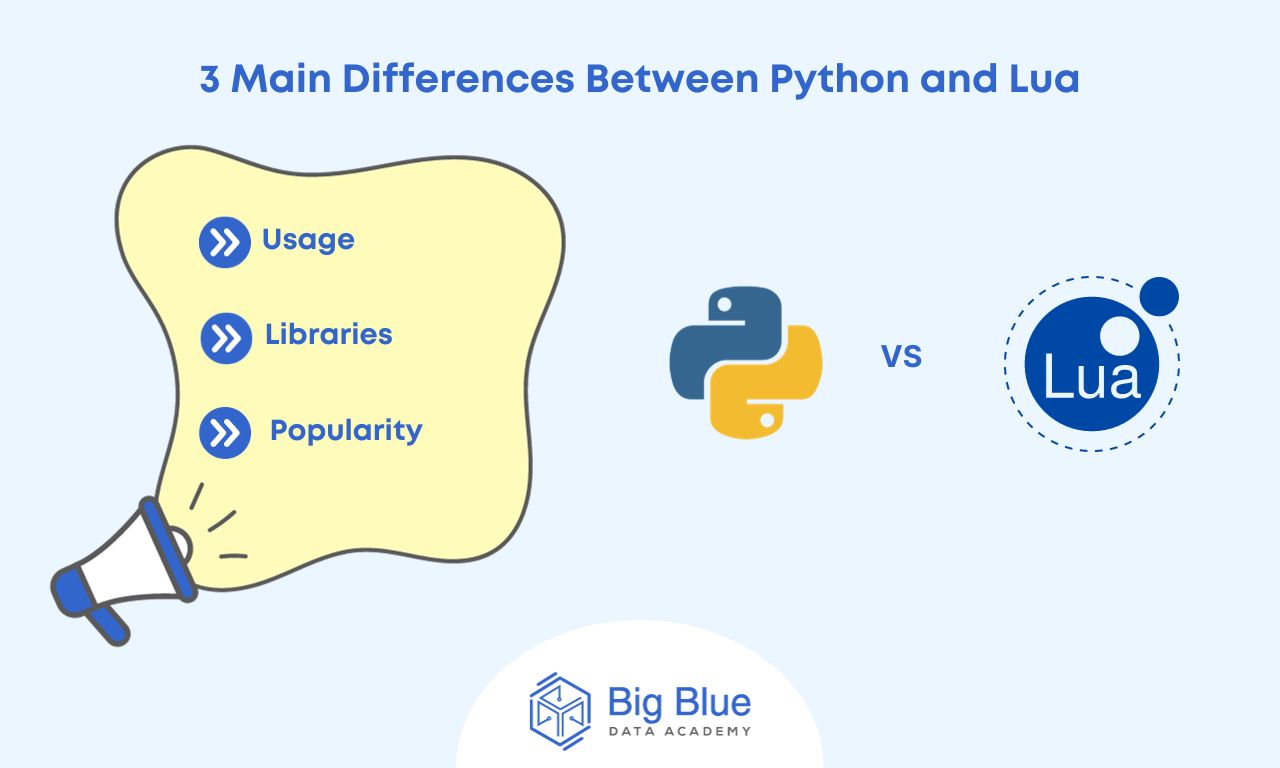Python vs Lua: Main Differences (2024)
Are you taking your first steps in programming and want to start with a language that meets your needs and is beginner-friendly?
If you find yourself in this dilemma, trying to decide which programming language to begin with, today's guide will discuss two programming languages that share some common elements, such as simplicity, but have several differences.
These languages are Python and Lua.
Let's start with the basics and define each one.
What is Python?
Python is a popular, high-level, object-oriented programming language.
It is a general-purpose language with dynamic properties and integrated data structures.
Developed in February 1991 by Guido Van Rossum, Python has gained widespread popularity worldwide.
Many well-known applications are built with Python, and it is used in various fields, including artificial intelligence, machine learning, and web development.
What is Lua?
Lua is a high-level, multi-paradigm programming language designed primarily for embedded use in applications.
It is cross-platform and lightweight, supporting procedural programming, object-oriented programming, functional programming, and data-driven programming.
Lua was created in Brazil in 1993 by Roberto Ierusalimschy, Luiz Henrique de Figueiredo, and Waldemar Celes, members of the Computer Graphics Technology Group (Tecgraf).
Lua, meaning 'moon' in Portuguese, is not an acronym.
It is currently housed in the LabLua, a laboratory at the Department of Computer Science at PUC-Rio.
Now that we've covered some essential aspects of each language, let's delve a bit more into how they differ.
Python vs. Lua: A Comprehensive Comparison
Although both Python and Lua are multi-paradigm languages characterized by simplicity and support for cross-platform development, they exhibit the following key differences:

Difference #1: Usage
Lua is often used as a scripting language in video games (e.g., in game engines like Unity), embedded systems, and other applications requiring a lightweight and fast scripting language.
Popular games and applications like Angry Birds and the Venmo mobile payment app were created using Lua.
On the other hand, Python has a broad range of applications, used for rapid application development (e.g., Instagram, Spotify, Uber), web development, data analysis, machine learning, and artificial intelligence.
Difference #2: Libraries
Python boasts an extensive ecosystem of libraries and frameworks, including PyTorch, TensorFlow, NumPy, and Pandas, with over 137,000 libraries.
In contrast, Lua takes a minimalist approach and has a small standard library.
Additional functionality is often provided through external libraries.
Difference #3: Popularity
Although both languages came to the fore just 2 years apart, Python surpasses Lua significantly in popularity.
Python is widely used and has a large community, including developers, data scientists, data analysts, and data engineers.
After all, it is the most popular programming language.
Lua has a smaller community compared to Python, which is partly because its use is mostly limited to specific areas such as game development.
More specifically, according to the TIOBE Programming Community Index, Python consistently ranks in the 1st position in terms of popularity.
In contrast, Lua has not managed to make the top twenty, but is ranked 35th in terms of popularity.
Ramping Up
In summary, we've provided a detailed analysis of Python and Lua, highlighting their differences.
The choice between Python and Lua depends on individual needs and preferences.
However, from an objective standpoint, if you're just starting in programming or aiming for a career in data science, Python offers more opportunities and broader employment prospects.
If you are intrigued and want to learn more about Python and its endless capabilities, follow us and we will keep you posted!


.jpg)